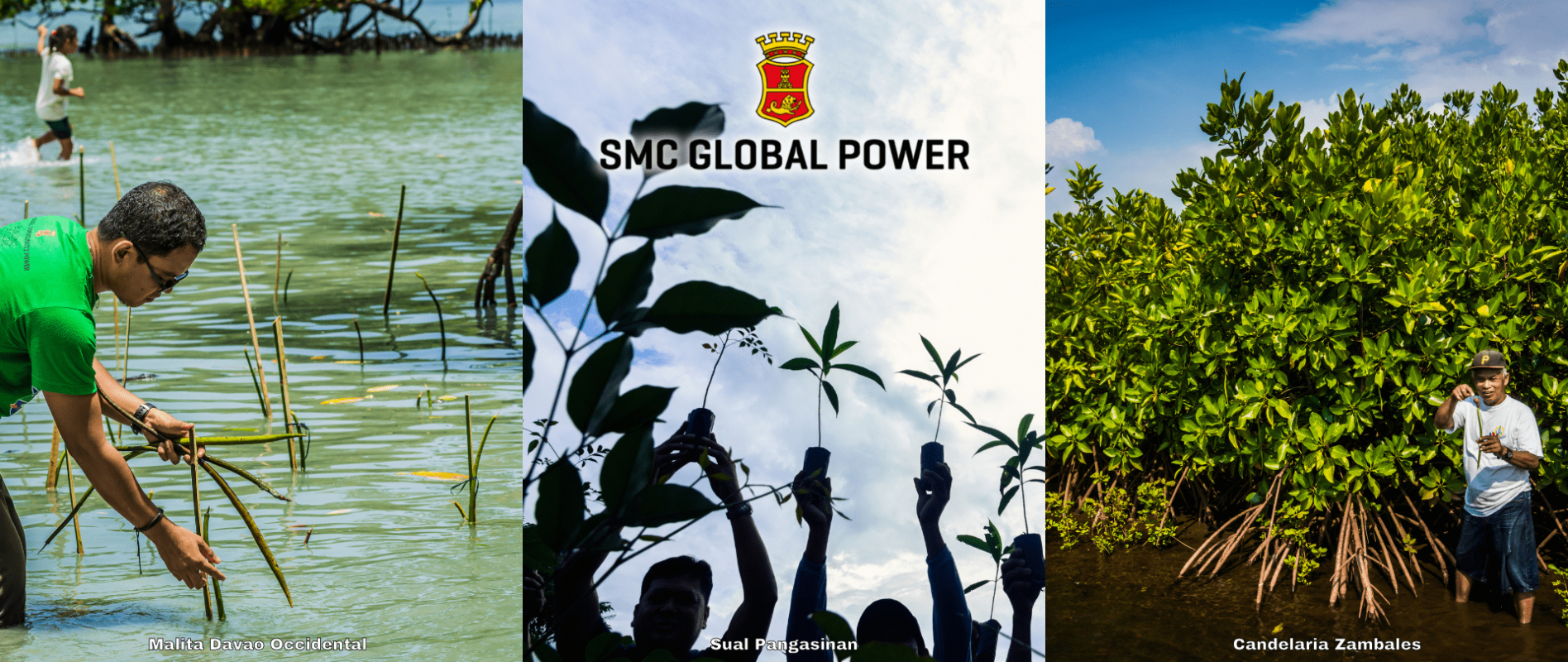SMC POWER UNIT TO PLANT 1.1M TREES ACROSS EIGHT PROVINCES THIS YEAR
San Miguel Corporation’s power unit is set to plant 1.1 million seedlings this year as part of its seven-year upland and mangrove forest rehabilitation initiative covering 4,000 hectares of land that has expanded to more than seven provinces in the country.
The program, dubbed “Project 747” and spearheaded by SMC Global Power Holdings Corp., first launched in 2019 and has so far planted a total 1,994,988 seedlings and propagules over 620 hectares of land as of December 2020.
It brings together employee volunteers and partner farmer and fisherfolk associations, who work together to plant and take care of the forests.
“With close to two million trees planted in two years, this shows the dedication and commitment of our SMC Global Power’s employee volunteers, our partner organizations, and our government agencies, in rehabilitating forests and growing new ones in both upland and coastal areas,” Ang said.
“Last year, because of pandemic restrictions, we were only able to plant 900,000 trees and mangroves. This year, we intend to make up for it by planting 1.1 million trees, when the rainy season starts,” said Ang.
The environmental program serves as a carbon sequestration mechanism to help mitigate climate change. Essentially, forests capture carbon dioxide (CO2) from large point sources such as power facilities, which trees and plants then convert into oxygen through the natural process of photosynthesis.
It involves the rehabilitation of 2,800 hectares of upland forests and 1,204 hectares of mangrove forests in Pangasinan, Zambales, Bataan, Bulacan, Quezon, Albay, Negros Occidental, and Davao Occidental.
“Caring for the environment is key to mitigating the global problem of climate change. While we work hard to provide for the growing energy needs of Filipinos, we also do not stop looking for better technology and sustainable solutions to reduce impact to the environment,” Ang said.
“Sustainability has always been ingrained in our company culture and built into all aspects of our businesses, that is why we continuously invest on programs that preserve the environment and promote environmental stewardship among various stakeholders,” he added.
Ang underscored the role played by local farmer groups and fisherfolk organizations that help identify the indigenous tree varieties to be planted in their respective areas. They are also crucial in the implementation of planting and livelihood initiatives, and ensuring the high survival rates of young trees.
“Our partner farmer and fishermen know their areas very well since they’ve been living and working there all their lives. So with the help of the Department of Environment and Natural Resources (DENR), we tap into their local knowledge on what plant species are endemic in their areas, and enlist their help in nurturing these trees to adulthood,” Ang related.
He noted that survival rates of planted seedlings and mangrove propagules are at an average of 89 and 91 percent, respectively.
Tree varieties in the upland plantation are Narra, Molave, White Lauan, Palosapis, Agoho, Batino, Igang, and Malabayabas while mangrove varieties planted include Bakawan Babae, Bakawan Lalaki, Bungalon, and Api-Api.
“The tree planting component, although massive in its size and scope, is only one part of the program that also aims to address the social and economic needs of our community partners, and leverage on their capacity for livelihood development and environmental stewardship,” he said.
Other components of the program, include initiatives on empowering the community, livelihood development, a Biochar Community Enterprise Development project, Adopt-a-River, and Coral Reef Rehabilitation projects.
Ang said he is particularly proud of the Biochar Community Enterprise Development Project as it complements the forest rehabilitation program as a carbon sequestration mechanism. Five Biochar partner communities help in the production and utilization of Biochar as an organic fertilizer applied to the soil to ensure higher survival rate of the trees.











